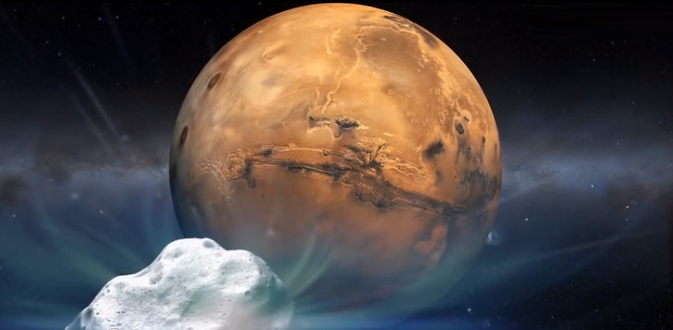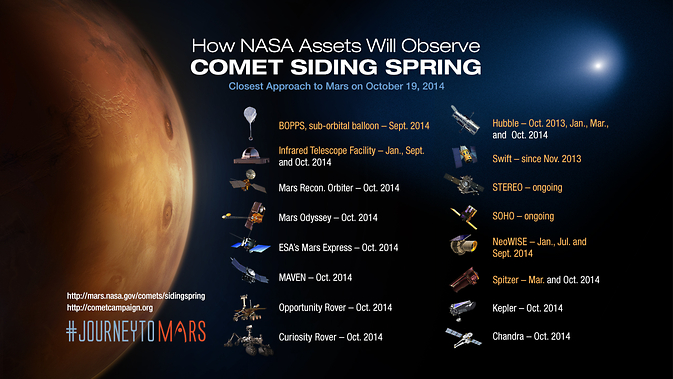The fleet of NASA’s science assets orbiting and exploring Mars are in for an astronomical treat, because on Sunday, October 19, a comet will hurtle right by the Red Planet.
Comet C/2013 A1, also known as comet Siding Spring, is about to pass within 87,000 miles of Mars, which is less than half the distance between Earth and the moon and less than one-tenth the distance of any known comet flyby of Earth. The nucleus of the comet will come closest to Mars around 2:27 p.m. EDT, soaring about 126,000 MPH. This will give researchers the once-in-a-lifetime chance to gather data on the comet and its effect on the Martian atmosphere.

An artist's concept of Siding Spring nearing Mars. Image credit: NASA.
Believed to be from the Oort Cloud, a spherical region of space made up of a swarm of icy objects thought to be left over from the formation of the solar system, the comet will be the first from its location to be studied up close by spacecraft, giving scientists the opportunity to learn more about the materials, such as water and carbon compounds, that existed during the solar system’s beginning 4.6 billion years ago. The Oort Cloud surrounds our sun and occupies space at a distance between 5,000 and 100,000 astronomical units.

Image credit: NASA.
In preparation for the flyby, NASA maneuvered its Mars Odyssey orbiter, Mars Reconnaissance Orbiter (MRO), and the Mars Atmosphere and Volatile EvolutioN (MAVEN), to reduce the risk of impact with high-velocity dust particles from the comet. Some of the best images and data will come from these assets, which will gather information before, during, and after the flyby about its size, rotation, and activity of the comet’s nucleus, the variability and gas composition of the coma, or its tenuous atmosphere, around the nucleus, and the size and distribution of dust particles in the comet’s tail.
Observations of the Martian atmosphere check for possible meteor trails, changes in distribution of neutral and changed particles, and effects of the comet on air temperature and clouds. MAVEN in particular will have a good opportunity to study the comet and how its coma interacts with Mars’ upper atmosphere.
Story via NASA.
Advertisement
Learn more about Electronic Products Digital





